Dear Susun,
Thank you so much for answering our questions here. I am in my 40’s and have not started menopause yet but am preparing myself for it by researching. Can you tell me what I can expect in terms of the different phases of menopause, and things I can do to ease the transition?
Susun Weed’s response:
The actual age at which menopausal Change begins varies considerably from woman to woman; the norm is 45, with a normal range of 35 to 55. During these premenopausal years, menstrual periods may become noticeably different (closer together, farther apart, scantier, more profuse). Night sweats or hot flashes come, if at all, only occasionally and are usually blamed on too many blankets or a rich meal.
Tips for the Premenopausal Years
- Nourish and tonify your entire hormonal system. Menopausal changes occur not only in the ovaries, but also in the adrenal, thyroid, pancreas, pineal, and pituitary glands. Herbal allies are remarkably safe and effective glandular nourishers.
- Increase the number and amount of calcium-rich foods you consume. No single effort will repay you more richly. High levels of calcium in the diet protect you from osteoporosis, heart disease, and emotional swings. Green leafy vegetables (herbs and weeds) are exceptional sources of calcium.
- Maintain regular menses. Non-ovulatory menstrual cycles, common during the premenopausal years, lack a progesterone surge. Lack of progesterone contributes enormously to loss of bone mass, and vaginal atrophy. Herbal allies can support progesterone production.
- Find some regular physical activity to fall in love with. Even gentle exercise, done regularly, helps maintain peak bone mass, strengthens the cardiovascular system, and insures deep sleep.
- Gain up to a pound a year for ten years. Thin women have more hot flashes and an altogether more difficult menopause than heavier women. Fat cells produce estrone, a kind of estrogen. (If you won’t let yourself gain ten pounds, at least stop trying to lose weight. Dieting decreases bone mass and weakens the heart.)
- Plan your Crone’s Time Away. The initial step of your initiation is isolation. As menopausal Change picks up speed at the end of the premenopausal years, many women find themselves desperate to be alone. Planning now can help make it a reality when you need it. Like an extended visit to the moonlodge (a sacred space where menstruating women can be away from daily life), Crone’s Time Away is time when the menopausal woman is freed from all social responsibility and encouraged to tend solely to herself. An extended vacation, sabbatical or Crone’s Year Away is ideal, but you can stay home and still take Crone’s Time Away.
The menopausal climax years include the year or two before and a year or more after your very last menstruation. The average age of a woman in the midst of her Change is 51. But women come to their menopausal climax in their 20s, 30s, and 40s, as well. Some achieve menopause by surgical means, some by way of chemotherapy or radiation, and some just naturally arrive early. (Menopausal climax before the age of 40 is considered “premature.”)
During this 2-5 year climax period, the bones refuse to take in calcium and bone scans will show growing osteoporosis; flashes, flushes, and night sweats may be frequent; palpitations, emotional sensitivity, and sleeplessness are common. Depending on the individual woman and her circumstances, other physical and emotional changes may come with the Change, or she may experience next to nothing.
Tips for the Menopausal Climax Years
- Take time for solitude. Although many women feel enormous satisfaction in tending and nourishing others, as our reproductive years come to a close, it is appropriate to turn away from care-taking. Hot flashes, sleeplessness, moodiness, and the like are easier to recognize as allies of wholeness when you are free to follow your own needs without concern for others. Take one day to be totally by yourself, or a Crone’s Year Away, or anything in between.
- Experiment with eggs, meat, and butter in your diet. Some women find these foods, especially if from organic sources, decrease menopausal symptoms. Some practitioners insist they increase menopausal distress, especially when from commercial sources.
- Relax and enjoy your hot flashes. Ride them like waves, feel them in your spine, ski the edges of your flushes, honor the volcanic heat of your core. Like labor pains, hot flashes are the outward sign of metamorphosis. Like labor pains, they are worse when resisted. Herbal allies help those with unrelenting flashes relax and enjoy, too.
- Spend time with a journal. Buy a blank book and write in it, draw in it, paste articles in it. Visions and dreams are particularly vivid and intense in the menopausal climax years; keep your journal handy so you can record them. Your emotional energies are readily available during the menopausal climax years; draw them in your book. Memories abound during these years; cherish them in your journal. Write your autobiography.
- Plan your Crone’s Crowning. As months pass and the moon waxes and wanes without drawing forth your menses, you pass through the second stage of initiation, death. Your identity as Mother dies. Let yourself break all the rules. Be someone totally different than you thought you could be.
The post-menopausal years symbolically begin on the fourteenth new moon after your final menstruation. (And continue, of course, for the rest of your life.) Hot flashes, aching joints, heart disease, incontinence, vaginal atrophy, and broken hips may diminish the quality and quantity of these years. Use of Wise Woman ways in the post-menopausal years can halt and reverse osteoporosis (the bones accept calcium once again), keep estrogen- and progesterone-sensitive tissues in the vagina and bladder from weakening and drying out, and maintain a healthy, vigorous heart and circulatory system.
Tips for the Post-Menopausal Years
• Eat vegetables, fruits, and grains instead of meat. Eating meat and meat fat weakens your bones as well as your heart, promotes cancer, and may contribute to post-menopausal hot flashes.
- Move, dance, walk, stretch, go, inquire, keep active. The essence of vitality is change. Now that you’ve been through the Change, don’t stop, keep changing. Break the rules and the taboos. Become an expert on pelvic floor exercises. Take up belly dancing. Pump iron. Wear purple.
- Write a legal will. And revise it every ten years. Face your own death. Plan for your own death. This completes the second stage of your initiation.
- Nourish yourself with every bite. Aging increases our needs for many nutrients while reducing our digestive ability. Make every bite count toward optimum vitality and step up digestive efficiency by using dandelion root tincture before meals. Discover new ways to serve yourself calcium-rich foods at every meal. Use herbal vinegars regularly. Gradually replace bone-depleting white flour products (bread, pasta, pretzels) with fiber-rich whole grains and whole grain products. Drink vitamin- and mineral-rich herbal infusions instead of mineral-depleting coffee, tea, and soft drinks. Try yogurt and fresh fruit instead of ice cream for stronger bones and fewer vaginal infections.
- Plan your Crone’s Ceremony of Commitment to Her Community. Anytime after your second Saturn return (age 57-61), you are ready for the third stage of your menopausal initiation: rebirth. You are She-Who-Holds-the-Wise-Blood-Inside. You are newly crowned, newly born, baby Crone. After isolation, after death, you rejoin the community. In your isolation, you revisioned yourself. By giving death to yourself as Mother, you claimed all of yourself. It is time to share that vision, to name yourself publicly, Crone, woman of wholeness.
“I am the Crone. I feel my way along paths following the energy and warmth that others have placed here. Trusting the dark, I am guided not by light, but by the flowing movements I sense. I am like the water that follows, without sight or foreknowledge, the ancient river’s channel.”
My Native American teachers tell me that we are in the midst of earth changes that will culminate around the year 2013. They say the earth changes will bring heat, and floods, and upheaval on an enormous scale. I am struck by the fact that 50 million women will have achieved menopause by 2013. Since we, as women, are one with the earth, is our massive, collective Change Her Change as well? Can we moderate her hot flashes? Give her ease from flooding? Soothe her emotional uproar? Emerge transformed together after our changes? How will we do it? With drugs, against the problems? With nature, blessed by all we are given? Will it matter to the Earth, Gaia, what choices I make in my menopause? What stories I tell myself? What I tell other women?
(excerpted from New Menopausal Years The Wise Woman Way by Susun S. Weed)
Green blessings, Susun Weed
photos: Wise Woman Spiral © iStockphoto.com / Chuck Spidell | Earth © 2004 Joanna Barnum



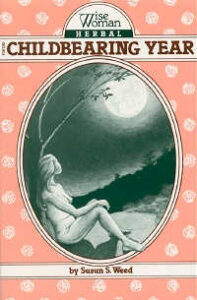
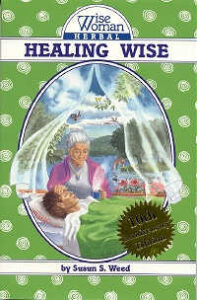

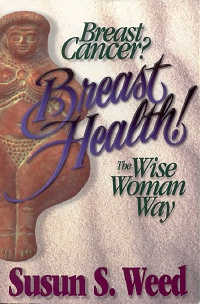
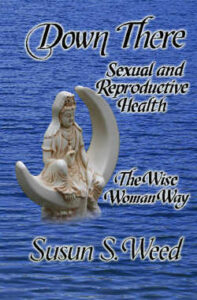
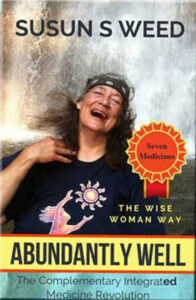



0 Comments